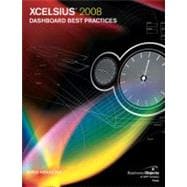
Loren Abdulezer is CEO and president of Evolving Technologies Corporation, a New York-based technology consulting firm that specializes in visual data analysis. He has a long-standing record in the Xcelsius community and has been a staunch proponent of the technology since its early days.
Loren is the editor-in-chief of Xcelsius Journal (www.XcelsiusJournal.com), an online magazine dedicated to users in the Xcelsius user community. Loren also started the website Xcelsius Best Practices (www.XcelsiusBestPractices.com). Loren is the author of Excel Best Practices for Business and Escape from Excel Hell. He served as the technical editor of Crystal Xcelsius For Dummies. He can be reached at dashboards@evolvingtech.com.
| Introduction 1 | |
| Xcelsius 2008 Fundamentals | |
| Motivation for Using Xcelsius 2008 11 | |
| Showcase of Xcelsius 2008 Dashboards 33 | |
| Getting Familiar with Xcelsius 2008 43 | |
| Embedded Spreadsheets: The Secret Sauce of Xcelsius 2008 69 | |
| Using Charts and Graphs to Represent Data 127 | |
| Single Value Components: Dials, Gauges, Speedometers, and the Like 157 | |
| Xcelsius 2008 Best Practices and Techniques | |
| Using Multi-Layer Visibility in Your Dashboards and Visualizations 181 | |
| Managing Interactivity 203 | |
| Xcelsius and Statistics 229 | |
| Financial Analysis 257 | |
| Maps in Xcelsius 275 | |
| Smart Data and Alerts 297 | |
| Working with Less-Than-Optimal Data 315 | |
| Other Dashboard Techniques and Practices 337 | |
| Advanced Features | |
| XML and Data Connectivity 353 | |
| Creating Custom Components for Fun and Profit 371 | |
| Appendices | |
| Supported Spreadsheet Functions in Xcelsius 2008 401 | |
| Xcelsius Product Family Comparison 415 | |
| Xcelsius Best Practice Techniques and Hip Pocket Tips 425 | |
| Index 43 | |
| Table of Contents provided by Publisher. All Rights Reserved. |
The New copy of this book will include any supplemental materials advertised. Please check the title of the book to determine if it should include any access cards, study guides, lab manuals, CDs, etc.
The Used, Rental and eBook copies of this book are not guaranteed to include any supplemental materials. Typically, only the book itself is included. This is true even if the title states it includes any access cards, study guides, lab manuals, CDs, etc.